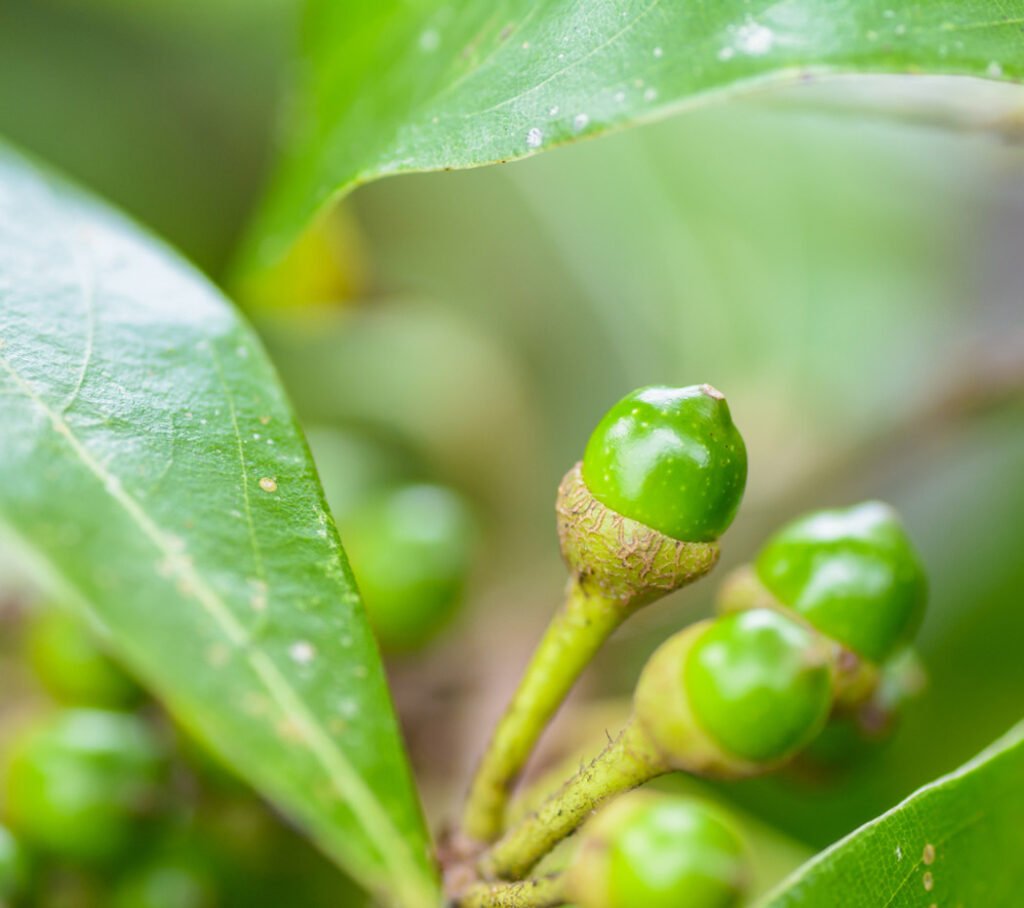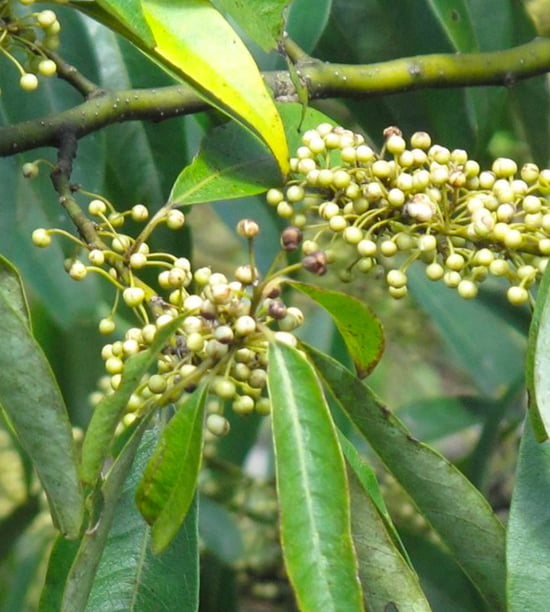Litsea Cubeba (Lauraceae family) and Lemongrass (Cymbopogon family) both are different plants. Litsea Cubeba is also called May Chang. In India we have this plant in the Himalayan region. And its essential oil is distilled from the small fruits of the Litsea plant. At Nisarga Farms Organic we distil both these oils. And we have our own lab with gas chromatography machine in Himalaya. This test machine we bought from Germany.

This question of Lemongrass and Litsea is one of the most frequently asked questions, hence I thought to reply based on my distillation experience in Himalaya, real lab test, and Ayurveda Aromatherapy perspective.
The most common similarity between Lemongrass and Litsea is ‘Citral’ aroma chemical.
To understand Litsea Cubeba, Lemongrass, and Other citrus plants it is important to understand ‘Citral’ first. Once Citral is understood, it becomes easy to use Litsea, Lemongrass, lemon and other oils from chemical perspective. And Ayurveda Aromatherapy properties has to be understood from different perspective.
Citral is an aroma chemical which is found in essential oils, as well as synthetically produced. It gives citrus and lemony aroma. That is why it is most widely preferred aroma chemicals in food, perfumery, herbal, cosmetic, and flavour industry due to its citrus and lemon flavour.
- Natural Citral percentage in Litsea oil ranges from 60-75% and also
- Natural Citral percentage in Lemongrass oil ranges from 60-75%.
Does it means that both the oils Litsea and Lemongrass have same percentage of Citral every time?
No it is not so. Depending on the plant type, and how well the oil is distilled, the percentage of Citral will vary. Like in our Nisarga Lemongrass Citral is approximately 73%, and in Litsea it is less than 70%.
This also means, limonene percentage will vary in Litsea.
What is the difference between Litsea and Lemongrass from scientific perspective?
The major difference between Lemongrass and Litsea is of ‘D-limonene’ or limonene aroma chemical. In Litsea the limonene is about 10-20% whereas in Lemongrass limonne is less than 1% or up to 1%
Two aroma chemicals are found in Lemongrass and Litsea, citral (common in both), and limonene in Litsea.
Due to Citral there is a similarity between Lemongrass and Litsea.
A good Litsea oil is the one which also as more than 15% of limonene.

What about Adulteration?
Since both these oils are rich in Citral content, there is also a serious level of adulteration because Lemongrass essential oil is easier to distil than Litsea, thus more cheaper also.
Many times Citral is added into Litsea oil and sold as Lemongrass.
Not only that, all over the world synthetic citral and synthetic limonene is manufactured which is also added into these oils.
It is said that few decades ago France and Italy excelled in making such synthetic citrus and other aroma and flavours. They sold all over the world under the name of natural identical aroma chemicals for few decades. Later countries like China and India also started to follow the models of France and Italy. One of my friends used to work in a food and beverage company. And he told me that they got more than 200 samples of citrus flavours from Italy, and all were natural. Perhaps, he did not know that all this is not possible naturally. All over the world synthetic food, flavour and perfume ingredients are used under the name of ‘natural identical substance’ or organic. Hence it is our responsibility to learn more about such aroma chemicals.
Once we understand a plant and its oil from scientific perspective it is easy to use it in a safe and efficient way.
And once we understand the plant and its oil from Ayurveda Aromatherapy perspective then the understand of the plant and its oil can be said ‘complete’.
Written by Krishana Chaitanya & MSA Team.
IG: @aromatherapist_krishana
You CAN copy, share and use this for educational purposes and give credit to the author Krishana Instagram/MSA website/ Nisarga Farms website/Telegram.

